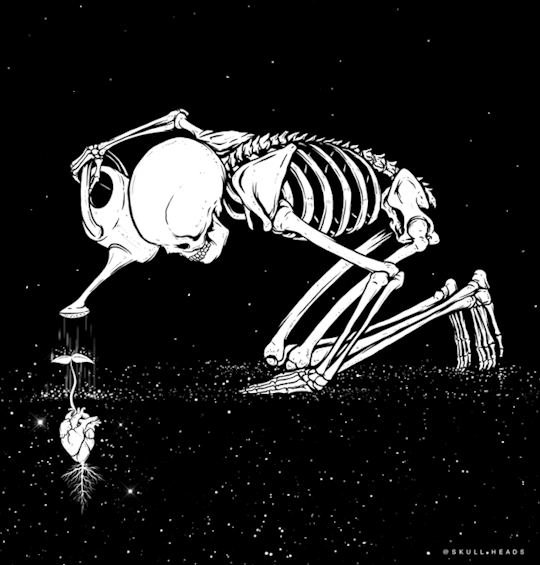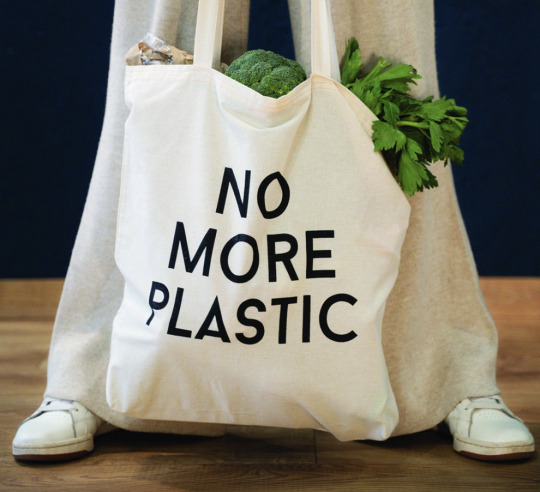#eco conservation
Explore tagged Tumblr posts
Text
Explore nature’s marvels at the first and only Philippine Biodome in Manila Ocean Park
Manila Ocean Park has long been a favorite family destination for combining fun and education. Now, with the addition of the Philippine Biodome, there’s even more to explore. The park’s former aviary section was transformed into a haven of plant and animal life which offers a unique blend of vibrant ecosystems, educational exhibits, and a commitment to sustainability, making it the perfect spot…
#animal encounter#bird feeding#eco adventure#eco conservation#eco tourism#irban nature escape#manila ocean park#philippine biodome#philippine biodome travel guide#sustainable-travel#Travel#wildlife conservation
0 notes
Text
🌲 National Forest Week is Here! 🌲
🌲 National Forest Week is Here! 🌲 September 22-28, 2024 🎉 Join the Friends of the Saskatoon Afforestation Areas for a week of celebration and action! This year’s theme, “Two-Eyed Seeing: Welcoming All Knowledge to Sustain Our Forests,” emphasizes the importance of integrating both Indigenous and Western knowledge for effective forest stewardship. 🌳🧠 🚩 Kick off the week with our Flag Raising…

View On WordPress
#biodiversity#Civic Square#Cliff Wright Library#Climate Action#Climate Awareness#climate change#Community Engagement#Community Involvement#Community Programs#Dr. Eric Lamb#Eco Conservation#Eco Education#Eco Programs#eco-friendly#Ecological Awareness#Educational Talks#environmental action#environmental advocacy#Environmental Education#Environmental Events#environmental leadership#Environmental partnerships#environmental solutions#environmental stewardship#Flag Raising Ceremony#Forest Care#forest conservation#Forest Ecology#Forest Events#Forest Health
0 notes
Text
Sustainable Driving: Tips for Reducing Your Carbon Footprint
In the quest for a greener planet, sustainable driving stands out as a practical and impactful approach for individuals aiming to reduce their carbon footprint. With environmental concerns at an all-time high, adopting eco-friendly driving habits is more crucial than ever. This article delves into actionable tips that not only contribute to a healthier environment but also enhance the efficiency…

View On WordPress
#carbon footprint#carbon neutral#carbon reduction#clean driving#Clean Energy#cleaner driving#climate change#driving efficiency#driving habits#earth-friendly driving#eco awareness#eco commuting#eco conservation#eco fuel#eco habits#eco innovation#eco journey#eco lifestyle#eco technology#eco tips#eco transport#eco travel#Eco-Conscious Driving#eco-driving#Eco-Friendly Cars#eco-friendly journey#efficiency tips#electric driving#electric vehicles#emission reduction
0 notes
Text
In light of the conservative philosophy that "cuts = efficiency", consider:
A skeleton is not a more "efficient" body.
All other parts are needed for it to function.
Even "foreign bodies" live in symbiosis to form the flora on our skin and in our guts. Protecting us from infection and helping us better digest food. They are part of the body.
Even just bone and muscle is not enough when the means to sustain our energy needs are stripped out.
Reduction is not efficiency.

#tories#conservatives#uk politics#solarpunk#microbiome#eco goth#austerity#neoliberalism#neoliberal capitalism#fuck neoliberals
286 notes
·
View notes
Text
Congo: People care more about animals than their fellow humans & "Eco"-warriors.
KEEP YOUR EYES ON CONGO!!!
#free congo#congo genocide#democratic republic of the congo#save congo#dr congo#congo#animals#animal rights#eco friendly#conservation#deforestation#ethnic cleansing#genocide
847 notes
·
View notes
Text
"At HarperCollins, a lot of attention and thought is given to deciding exactly what combinations of margin measurements, font, and layout feel most appropriate for the genre, and writing style.
But in a case of do-your-part environmentalism, designers at the publishing house have now standardized a series of subtle and imperceptible alterations to normal font style, layouts, and ink that have so far removed the need for 245 million book pages, totaling 5,618 trees.
Telling the story in Fast Company, representatives from HarperCollins, one of the four largest publishing houses in the world, explained that the idea first arose in Zondervan Bibles, HarperCollins’ Christian publishing division. Being that the Bible is 2,500 pages or sometimes more, saving ink and pages was not just an environmental consideration, but one of production costs.
A new typeface called NIV Comfort Print allowed Zondervan to shave 350 pages off of every Bible, which by 2017 had amounted to 100 million pages, and which, as Fast Company points out, would be four times higher than the Empire State Building if stacked.
The production and design teams then wondered how much they could save if they applied the same concepts to other genres like romance and fiction. Aside from the invention of the eBook, publishing hasn’t changed much in the last 100 years, and the challenge was a totally novel one for the teams—to alter all their preconceived ideas and try and find a font and typeface that resulted in fewer pages without being harder to read.
They eventually standardized 14 different combinations their tests determined were the most environmentally friendly, and which delivered an unchanged reading experience.
But the challenge didn’t stop there. Printed books, one might not know, are printed in large sheets which are then folded into sections of sixteen pages, meaning that Leah Carlson-Stanisic, associate director of design at HarperCollins, has to calculate the savings of space, words, and ultimately pages with the help of her team to fall in multiples of sixteen.
Nevertheless, they have been successful with it so far, and in the recent print run of one popular book, 1 million pages (or a number near 1 million that coincides with the 16 times tables) were saved.
“We want to make sure our big titles, by prominent authors, are using these eco-fonts,” Carlson-Stanisic said. “It adds up a little bit at a time, saving more and more trees.”"
-via Good News Network, April 4, 2024
--
Note: Great! Waiting to see this on the rest of their books and at the other big publishers!
Actually, though, it's worth noting that this may not come quickly to the other large publishers, because Harper Collins almost certainly owns that font - meaning that other publishers would have to pay HarperCollins in order to use it, on an ongoing basis.
More on publishing shit and more realistic solutions here below the cut!
What I'm hoping for and think is more likely is that this will inspire the development of open source eco-friendly fonts, which would be free for anyone to use. That would make it far more likely other publishers would adopt eco-friendly fonts.
I'm also hoping it would inspire other publishers to create similar eco-friendly fonts of their own.
Ideally, there would be a whole new landscape of (hopefully mostly open source) eco-friendly fonts. And/or to see calculations of the eco-friendliness of popular existing fonts, compared to each other.
If we could have a publicly accessible list of calculations for different fonts, including fonts designed to maximize eco-friendliness, I really do think that it would affect which fonts publishers choose to use. Here's why:
Most people in publishing are on the left (notoriously, actually) and really do care about the environment
People in publishing are plenty aware of these issues re: paper and trees, I promise
Shorter books means smaller production costs - and possibly smaller shipping costs as well, over time! So it would save them money too.
Eco-friendly fonts could also be combined with other measures for greater effect, such as bamboo paper (already in use for a lot of projects where page color/quality is more flexible) and thinner paper (aka paper with a lower weight) that uses less trees.
Don't expect books to all move to just one or two different fonts, though. Publishers and typesetters and font designers will innovate to create more options instead, though it will take longer. This is because different books really do use different fonts for various different reasons - one new font to rule them all isn't really a solution here.
"Every book is in the same font" may sound like a "whatever" deal to a lot of people, but as someone who works in publishing - trust me, it would actually make your reading experience worse, even if you could never quite put your finger on why.
#publishing#books#book publishing#bookblr#harper collins#fonts#font design#eco friendly#sustainability#conservation#trees#deforestation#good news#hope
397 notes
·
View notes
Text
Experience the Future of Paintbrush Care with BruKon
The Hidden Environmental Cost of Neglected Paint Brushes
#Brush#Conservation#diy#eco painting#less solvents#less toxic fumes#paint brush cleaner#painting#protect your paint brush#reduce waist#wet brush containers#wet brush system
32 notes
·
View notes
Text

#good news#nature#science#environmentalism#environment#animals#climate change#conservation#climate legislation#climate law#climate#climateaction#climate activism#global climate change#climate crisis#portuguese#portugal#europe#eco anxiety
286 notes
·
View notes
Text
"Despite the belief that leaving leaves will suffocate the lawn and leave them patchy, this isn’t the case.
According to The Farmer’s Almanac blogger Robin Sweetser, “pound for pound, leaves contain twice the mineral content of manure,” making it more powerful than the normal fertilizer and mulch that homeowners purchase each year.
By using leaves, homeowners are saving money on fertilizer and mulching that leaves will naturally do for free.
Environmentally, rotten leaves also act as food, shelter, and nesting or bedding throughout the winter for wildlife, bugs, and microorganisms. Moths and butterflies are known to winter in leaf litter, with birds and toads hiding beneath the leaves or picking through them in search of food.
This far and away beats the alternative of placing leaves in landfills, which FoodCycler warns can produce methane gas (CH4), which is 25 times worse for the environment compared to CO2 and traps atmospheric heat."
#txt#earth stewardship#eco#gardening#autumn#autumn leaves#fertilizer#mulch#mindful consumption#eco conscious#slow living#soft living#rewilding#conservation#wildscaping#raking leaves#holistic leveling up#leveling up#that girl#green juice girl#ecofeminism#sustainability#sidewalkchemistry
164 notes
·
View notes
Text
"If we save our wild places, we will ultimately save ourselves." -- Steve Irwin
26 notes
·
View notes
Text
Grey Water Recycling Systems: Your Guide to Sustainable Water Management at Home
As environmental awareness grows, homeowners and businesses alike are seeking ways to conserve resources and reduce their ecological footprints. One highly effective solution is implementing a grey water recycling system. Grey water systems allow you to reuse water from sinks, showers, and washing machines for non-potable purposes, reducing both water consumption and utility costs. In this…
#Benefits of grey water reuse#DIY grey water system#Eco-friendly water systems#Grey water irrigation#Grey water recycling system#Grey water regulations#Grey water reuse#Grey water systems#Grey water systems for home#Grey water treatment#Household water recycling#How to install a grey water recycling system#Safe use of grey water in gardens#Sustainable water management#water conservation
17 notes
·
View notes
Video
Steely-vented Hummingbird by Adam Rainoff Via Flickr: The Steely-vented Hummingbird (Saucerottia saucerottei) is a captivating species native to the tropical and subtropical forests of Central and South America. This photo, taken at La Minga Ecolodge near Cali, Colombia, captures a female perched gracefully amidst a backdrop of soft green tones. Her iridescent green feathers glisten in the natural light, with hints of blue and gold adding depth to her plumage. At 1988 meters above sea level, this location offers the perfect environment to observe the diversity of hummingbirds that thrive in Colombia, a country known for its remarkable avian richness. From a technical perspective, this image was taken with a Canon R5 and a 100-500mm lens at 500mm. The camera was set to TV mode with a shutter speed of 1/1000 second, ready for action shots, but this hummingbird’s momentary stillness provided an opportunity to switch focus. The fading light required me to raise the ISO to 800, a setting the R5 handles with ease, delivering a noise-free result that preserves fine details. Handheld at this focal length, the camera’s stabilization ensured sharpness while maintaining flexibility to adjust composition on the fly. ©2021 Adam Rainoff Photographer
#La Cumbre#Valle del Cauca#Colombia#hummingbird#bird#nature#wildlife#Saucerottia#photography#rainforest#tropical#feathers#plumage#iridescent#perch#flight#conservation#environment#ecology#forest#mountains#travel#eco-tourism#biodiversity#Canon#lens#adventure#exploration#exotic#natural
16 notes
·
View notes
Text

#wwf#world wildlife fund#eco terrorism#indigenous rights#indigenous issues#socialist memes#leftist memes#communist memes#nature meme#congo genocide#decolonize#conservation#meme#memes#tumblr memes#funny memes#memesdaily#meme humor#best memes#humor#humour#funny because it's true#funny but true#political memes#political humor#political shitposting#shitpost#dank memes#dank humor#dankest memes
33 notes
·
View notes
Text
Colorado Ranchers Kill Wolf Project
CLICK TO VIEW new article about a new tactic Colorado ranchers are using to kill the wolf reintroduction project. #wolves #wolfreintroduction
Just as a new batch of wolves are set to be released into the Colorado Rocky Mountain wilderness, the ranchers launch a new bid to kill the wolf project. The headline on a CBS news article reads, “Efforts underway to stop wolf reintroduction in Colorado with popular vote”. Please do not sign their petitions to get their new initiative on the ballot. If you don’t stand up for the wolves now, the…
#animals#eco tourism#nature#save the wolves#tourism#wild wolves#Wildlife#wildlife conservation#wolf#wolf reintroduction#wolves
3 notes
·
View notes
Text
10 Easy Ways to Start Your Sustainable Journey Today
Introduction:
Embarking on a sustainable journey doesn't require a complete overhaul of your lifestyle. In fact, small, mindful steps can lead to significant positive changes for both you and the environment. If you're new to sustainability or looking for simple ways to make a difference, you're in the right place. In this post, we'll explore ten easy steps you can take right now to kickstart your sustainable living journey.

1. Reduce, Reuse, Recycle:
The classic mantra holds true. Start by properly recycling items like paper, glass, and plastics. Before tossing something out, consider if it can be repurposed or upcycled. Reducing waste begins with conscious choices.
2. Conserve Energy:
Switch off lights and unplug devices when not in use. Opt for energy-efficient LED bulbs and appliances. Even adjusting your thermostat by a degree or two can make a difference.
3. Ditch Single-Use Plastics:
Invest in reusable shopping bags, water bottles, and coffee cups. Say goodbye to disposable utensils and straws. These small changes can significantly reduce plastic waste.
4. Choose Sustainable Transportation:
Whenever possible, opt for walking, biking, or using public transportation. Consider carpooling or investing in an electric or hybrid vehicle if it aligns with your needs.
5. Support Local and Sustainable Food:
Frequent local farmers' markets, and choose seasonal, locally sourced produce. Reducing food miles and supporting sustainable farming practices benefit both you and the planet.
6. Unplug and Disconnect:
Set aside tech-free time to reduce screen time and energy consumption. Encourage family or friends to join you in reconnecting with nature and each other.
7. Practice Mindful Consumption:
Before making a purchase, ask yourself if it's a necessity. Invest in high-quality, durable items that will last. Choose brands with a commitment to sustainability.
8. Compost Your Kitchen Waste:
Turn food scraps and yard waste into nutrient-rich compost for your garden. It's a fantastic way to reduce landfill waste and enrich your soil naturally.
9. Educate Yourself and Others:
Stay informed about environmental issues and solutions. Share your knowledge with friends and family to inspire collective action.
10. Get Involved Locally:
Engage with local environmental groups and community initiatives. Participate in clean-up events, tree planting, or sustainability workshops. Your active involvement can create positive change at the grassroots level.
Conclusion:
Remember, sustainability is a journey, not a destination. Each step you take, no matter how small, contributes to a brighter, greener future. So, start today, and together, we can make a meaningful impact. Stay tuned for more insights and tips on sustainable living from GreenLife Insights!
#sustainability#greenliving#eco friendly#Environmental Conservation#reduce#reuseandrecycle#energy conservation#mindful consumption
37 notes
·
View notes
Text
The Wild Wonders of the Serengeti!
youtube
#Serengeti#wildlife#nature documentary#flora#fauna#eco-tourism#wildlife conservation#ecology#climate change#ecosystem#Youtube
2 notes
·
View notes